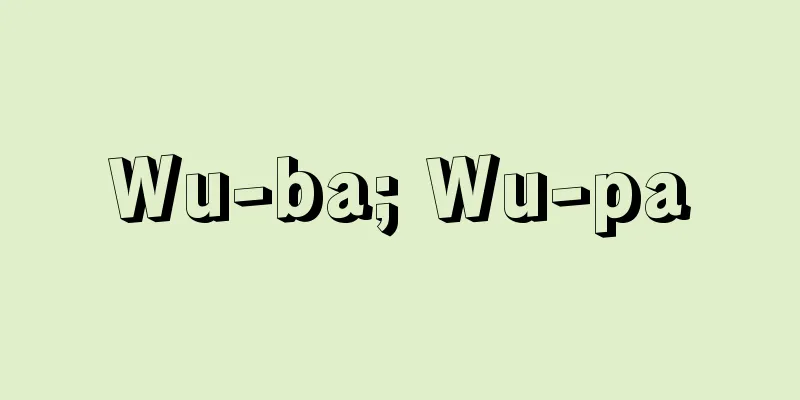Wu-ba; Wu-pa

|
The feudal lords who became leaders of the nations during the Spring and Autumn Period in China. During this period, while the feudal lords outwardly respected the now-defunct King of Zhou, they also made alliances with each other and united politically and militarily under the leadership of the powerful feudal lords. The most powerful of these leaders was called a hegemon, and the Five Hegemons was a collective term for the most representative leaders. The number five comes from the theory of Yin and Yang and the five elements, and is said to be the Duke of Huan of Qi, the Duke of Wen of Jin, King Zhuang of Chu, Helü of Wu, and Goujian of Yue. There is also a theory that Duke Xiang of Song and Duke Mu of Qin are included instead of Wu and Yue, and there is no consensus, but this is because the idea of the Five Hegemons was created during the Warring States period. Source: Encyclopaedia Britannica Concise Encyclopedia About Encyclopaedia Britannica Concise Encyclopedia Information |
|
中国の春秋時代に列国の指導者になった諸侯。この時代諸侯たちは権力のなくなった周王を表面上尊重しながらも,互いに盟約を結んで有力諸侯を盟主として,その指導下に政治的あるいは軍事的に団結した。その盟主の最も有力な者を覇者と呼んだが,五覇はその代表的盟主の総称。五は陰陽五行説からきており,斉の桓公,晋の文公,楚の荘王,呉の闔閭 (こうりょ) ,越の勾践 (こうせん) の5人とされる。呉,越の代りに宋の襄公,秦の穆公を入れる説もあり,一定していないが,それは五覇という考えが戦国時代になってつくられたからである。
出典 ブリタニカ国際大百科事典 小項目事典ブリタニカ国際大百科事典 小項目事典について 情報 |
>>: Aleksandr Ivanovich Konovalov
Recommend
Tadaaki Abe
Year of death: May 3, 1675 (June 25, 1675) Year of...
Chrysobalanus orbicularia (English spelling) Chrysobalanusorbicularia
… [Mitsuru Hotta]... *Some of the terminology tha...
Alliance - Gasshorenko
China's foreign policy during the Warring Sta...
Kushima - Kushima
...Rice from the Irrawaddy Delta in the hinterlan...
Needle Memorial Service - Harikuyo
An event to take a break from needlework and to o...
Emergency rice field - Emergency rice field
Also called shukyuden or shingoden, these were ric...
Parthenium argentatum (English spelling) Parthenium argentatum
… Guayule rubber has been attracting attention re...
Yakko Dance
This dance is performed by people dressed as serv...
Ezana - Ezana
…Aksum traded with the Kingdom of Kush on the upp...
Kinmonga - Kinmonga
A moth belonging to the order Lepidoptera and the...
Extreme ultraviolet region
...When the wavelength is below 100 nm, thin meta...
The Rise and Fall of the Genpei
A military tale from the Kamakura period. Also rea...
Polynesian Outliers
… [Yamamoto Matori]. … From Tikopia Island ...Pop...
Boatmen's Group
The Edo Shogunate's official organization for ...
Linden, J.
...In Nepal and Borneo, orchids are planted in sa...









